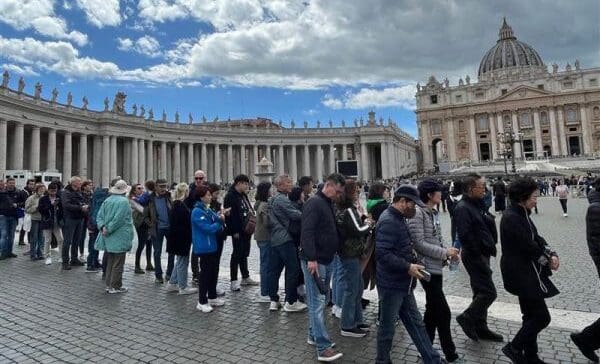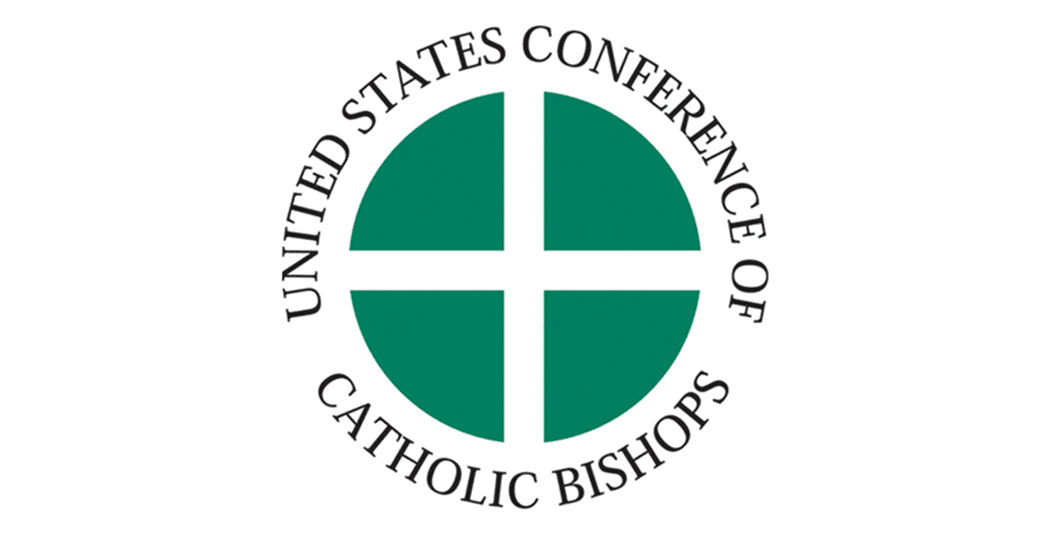How would you answer these liturgy-related questions? (All of them are typically posed to liturgists.)
- Can the dead receive the sacrament of anointing?
- When bringing holy communion to the sick, does the extraordinary minister of Holy Communion purify the pix?
- Can soap go into the sacrarium?
- When is Holy Communion under both kinds allowed?
- Can Catholic chapels (at hospitals and universities, for instance) share its resources, such as the building or altar, with non-Catholic groups?
- When do extraordinary ministers of Holy Communion leave Mass to distribute communion to the homebound?
- Does the Universal Prayer have to be prayed at every Mass?
Answers:
- The sacrament of the Anointing of the Sick, also called “extreme unction,” applies the graces of Jesus’ Paschal Mystery to those of the baptized who, having attained the use of reason, are “in danger of death from sickness or old age” (Code of Canon Law, Canon 1004§4; also Catechism of the Catholic Church (CCC), 1514). The sacrament bestows the grace upon those who receive it so that they may unite their sufferings to those of Christ for the good of the whole Church, as well as prepare themselves for their ultimate return to God (see CCC, 1520-23). For these reasons, those who are already deceased cannot be anointed. As the ritual Pastoral Care of the Sick: Rites of Anointing and Viaticum explains, “when a priest has been called to attend those who are already dead, he should not administer the sacrament of anointing. Instead, he should pray for them, asking that God forgive their sins and graciously receive them into the kingdom” (14). The ritual text includes a section of prayers and texts “For the Dead” (223-231). Still, “if the priest is doubtful whether the sick person is dead, he may give the sacrament conditionally” (14), introducing the formula with the words, “If life is in you,” and then continuing with the normative words, “Through this holy anointing may the Lord in his love and mercy help you with the grace of the Holy Spirit” (269).
- The General Instruction of the Roman Missal specifies that during or after Mass only “the Priest, the Deacon, or an instituted acolyte” may purify the sacred vessels (279). Nevertheless, in the context of bringing Holy Communion to the sick, the extraordinary minister of Holy Communion does purify the vessels that have been used to carry Holy Communion to the sick person(s). This is clearly specified with regard to bringing the Precious Blood to the sick person where, after the Precious Blood is consumed, the “minister himself” purifies “the vessel as required [debitas ablutiones perficiendas curet]” (Holy Communion and Worship of the Eucharist Outside Mass [HCWEOM] 55, 62, 77; see also Pastoral Care of the Sick 74, 88, 96; Norms for the Distribution and Reception of Holy Communion under Both Kinds in the Dioceses of the United States of America, 54). In this context the “minister” specified is the “acolyte or extraordinary minister, duly appointed” (HCWEOM, 54: “Chapter II: Administration of Communion and Viaticum to the Sick by an Extraordinary Minister”).
- A sacrarium is a “special sink used for the reverent disposal of sacred substances. This sink has a cover, a basin, and a special pipe and drain that empty directly into the earth, rather than into the sewer system” (United States Conference of Catholic Bishops, Built of Living Stones, 236). The water used to wash sacred linens, holy water, baptismal water, and even holy oils may be returned to the earth via the sacrarium. The water used to wash cloths that have been used to clean spills of the Precious Blood may also be poured in the sacrarium. The Precious Blood itself, however, may never be so poured. After initial purifications of vessels or linens have been carried out, soap may be used for subsequent cleaning. But since these further washings have presumably been done after any sacred elements (holy water, oil, or elements of the Blessed Sacrament) have been removed, it would not be necessary to pour the soapy water into the sacrarium. On the other hand, there appears no prohibition against doing so.
- Many people assume that Holy Communion is to be distributed under both kinds whenever Mass is celebrated. In the Roman Rite, Holy Communion may be distributed under both kinds in specific situations and to specified persons.
The ritual books specify, for example: 1) newly baptized adults in the Mass following their Baptism; 2) Godparents, parents, spouses, and lay catechists of a newly baptized adult, during the Mass of Initiation; 3) the bridegroom and bride at the Nuptial Mass; 4) parents, relatives, and special benefactors of a newly ordained priest celebrating his first Mass.
Additionally, Holy Communion under both kinds is permitted for: “1) Priests who are not able to celebrate or concelebrate Mass; 2) the Deacon and others who perform some duty at the Mass; 3) members of communities at the Conventual Mass or the ‘community’ Mass, along with seminarians, and all those engaged in a retreat or taking part in a spiritual or pastoral gathering” (see General Instruction of the Roman Missal (GIRM), 283).
Beyond these specified contexts, most bishops in the U.S. have delegated to pastors the prudential judgment to decide when it is opportune to distribute Holy Communion under both kinds (see GIRM 283), even to all communicants at daily Masses on a ferial day. With such broad discretion, one might expect the distribution of Holy Communion under both kinds to be offered at every Mass. In our post-Covid circumstance with extraordinary ministers of Holy Communion in shorter supply, parishes are increasingly choosing to distribute Holy Communion under both species in more limited situations such as the celebration of major feasts and in those situations suggested by the ritual books (listed above). This decision to distribute Holy Communion under both species less frequently than was done before may have the effect of aligning U.S. practice more closely with that observed in the rest of the Latin Church; it also avoids “obscuring the role of the Priest and the Deacon as the ordinary ministers of Holy Communion” (Norms for the Distribution and Reception of Holy Communion under Both Kinds in the Dioceses of the United States of America, 24). - Can Catholic chapels (at hospitals and universities, for instance) share its resources, such as the building or altar, with non-Catholic groups? The Holy See published the “Directory for the Application of Principles and Norms on Ecumenism” in 1993 during the papacy of John Paul II. The Directory’s aim is “to be an instrument at the service of the whole Church and especially of those who are directly engaged in ecumenical activity in the Catholic Church. The Directory intends to motivate, enlighten and guide this activity…. [T]he Directory gives orientations and norms of universal application to guide Catholic participation in ecumenical activity” (6). It addresses various kinds of collaboration with both Orthodox Churches and the non-Catholic ecclesial communions of the West.
Relative to “Sharing Other Resources for Spiritual Life and Activity,” the Directory states: “Catholic churches are consecrated or blessed buildings which have an important theological and liturgical significance for the Catholic community. They are therefore generally reserved for Catholic worship. However, if priests, ministers or communities not in full communion with the Catholic Church do not have a place or the liturgical objects necessary for celebrating worthily their religious ceremonies, the diocesan Bishop may allow them the use of a church or a Catholic building and also lend them what may be necessary for their services (137)…. In hospitals, homes for the aged and similar institutions conducted by Catholics, the authorities should promptly advise priests and ministers of other Communities of the presence of their faithful and afford them every facility to visit these persons and give them spiritual and sacramental ministrations under dignified and reverent conditions, including the use of the chapel” (142). - There is no clear answer to when extraordinary ministers of Holy Communion leave Mass to distribute communion to the homebound, as none of the ritual books offer a particular time, whether that is 1) after receiving the host for the sick or homebound during the distribution of Holy Communion, or 2) waiting for some cue or sending near the end of Mass, or 3) waiting until Mass has concluded. In the absence of anything official at the level of universal legislation or at the level of an episcopal conference, a diocese may offer guidelines on the matter. If no official norms exist, the rubric at the Mass of the Lord’s Supper on Holy Thursday provides guidance that may reasonably be applied at other Masses. “At an appropriate moment during Communion,” it says, “the Priest entrusts the Eucharist from the table of the altar to Deacons or acolytes or other extraordinary ministers, so that afterwards it may be brought to the sick who are to receive Holy Communion at home” (rubric 33; emphasis added).
- The Universal Prayer or Prayers of the Faithful or General Intercessions are only obligatory on Sundays and Holy Days of Obligation.
Sacrosanctum Concillium (1963) called for the restoration of the Universal Prayer in the reform of the Mass: “Especially [praesertim] on Sundays and feasts of obligation there is to be restored, after the Gospel and the homily, ‘the common prayer’ or ‘the prayer of the faithful’” (53).
Shortly after this, in 1965, a question was put to the Congregation of Rites with regard to “Whether in Masses celebrated with the people, the prayer of the faithful is obligatory on ferial days?” The Congregation responded that the obligation to pray the Universal Prayer “does not oblige” at daily Masses.
The current General Instruction of the Roman Missal (GIRM) stands in continuity with this response when it states that it “is desirable [expedit] that there usually be such a form of prayer in Masses celebrated with the people” (GIRM, 69). The Latin word employed here, expedit, does not constitute a strict obligation but rather a suggestion.
Still, while the Universal Prayer is not obligatory, it may be used at daily Masses to great benefit. This prayer provides the baptized the opportunity to exercise their share in Christ’s priesthood by interceding for the needs of the world.


